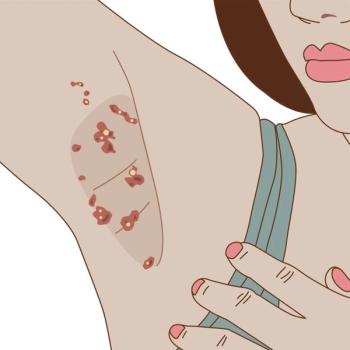
Parapsoriasis in a Middle-Aged Man
A 58-year-old man presented with a 6-month history of a mildly pruritic rash of the left axilla. The patient was in good health, took no medications, and denied any other symptoms.
A 58-year-old man presented with a 6-month history of a mildly pruritic rash of the left axilla. The patient was in good health, took no medications, and denied any other symptoms.
A solitary, orange-red, slightly scaly and atrophic patch involved the axilla and adjacent skin. The differential diagnosis included tinea corporis, erythrasma, contact dermatitis, parapsoriasis, and mycosis fungoides (cutaneous T-cell lymphoma).
Dr Ted Rosen of Houston writes that a potassium hydroxide evaluation of scale scrapings from a lesion ruled out tinea corporis. Examination of the lesion with a hand-held black light failed to demonstrate the typical coral-red color seen in erythrasma. A skin biopsy disclosed flattened epidermis and a band-like dermal lymphocytic infiltrate that included atypical-appearing cells. Flow cytometry demonstrated clonality of the cells. These findings established the diagnosis of large plaque parapsoriasis. This disorder is considered a precursor of mycosis fungoides, although transformation into cutaneous lymphoma occurs in only about 15% to 20% of patients.
This patient's lesions resolved after a 10-week course of twice-weekly psoralen–UVA therapy. He returns for periodic evaluations.
Newsletter
Enhance your clinical practice with the Patient Care newsletter, offering the latest evidence-based guidelines, diagnostic insights, and treatment strategies for primary care physicians.

















































































































































































































































































